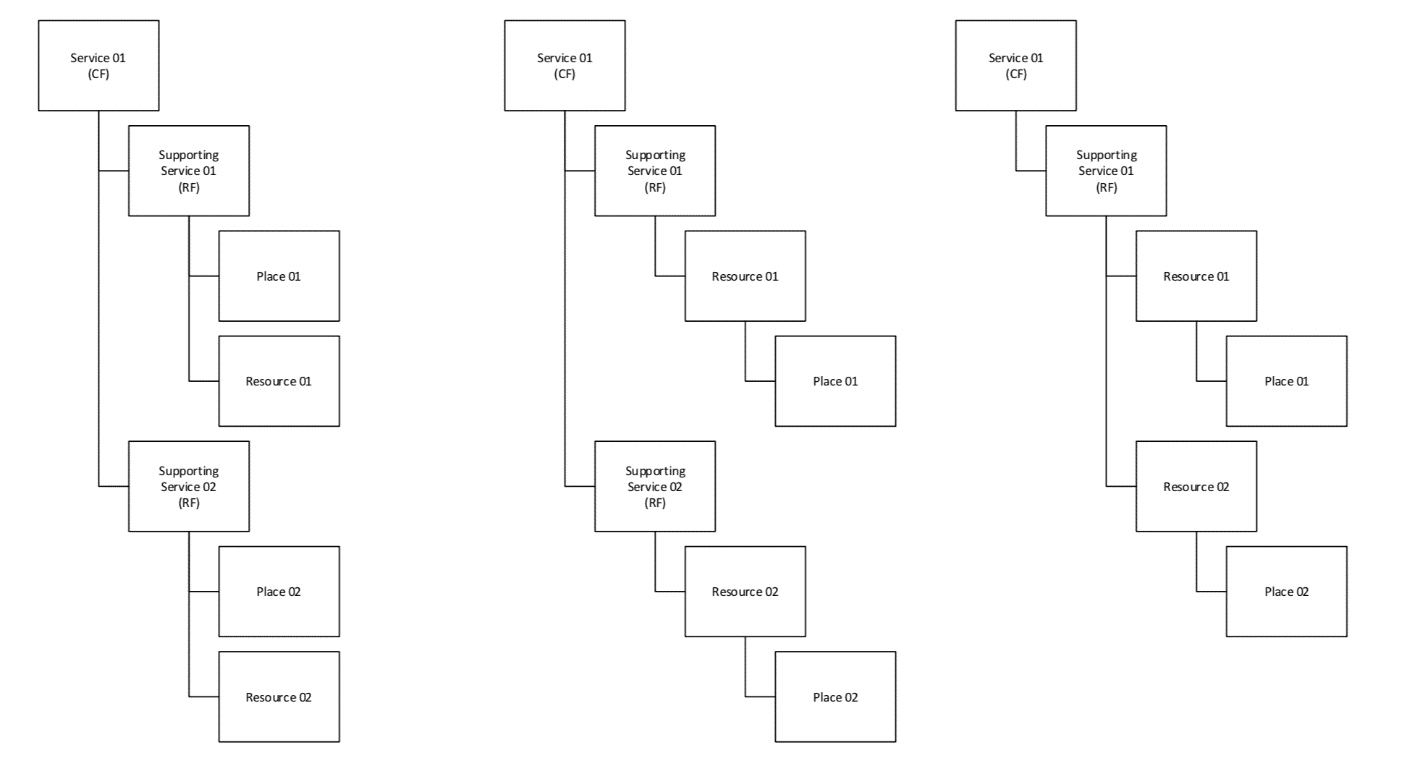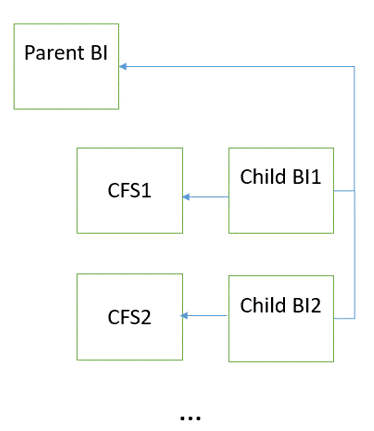Service Inventory Management
Oracle Communications Unified Inventory Management (UIM) includes REST APIs that meet the TMF638 Service Inventory OPEN API Specification for the GET, POST, PATCH, and DELETE methods. This API updates the existing resources of the services with new resources provided in the input.
You can create and process a single service using /service and if there are of multiple services using /bundle.
The POST method supports the following operations:
-
Creates a new service or bundle:
-
POST - /service for a single service
-
POST - /bundle for a bundle service
-
-
Processes a single or bundle service based on the task and the input:
-
POST - /service/{id}/{task} for a single service
-
POST - /bundle/{id}/{task} for a bundle service
-
-
Updates a bundle service: POST - /bundle.
This shows the supported service structures as well as the relationships between customer-facing services (CFSs), resource-facing services (RFSs), resources, and places. RFS can have multi-level RFS as child services.


Bundle Service
The ID of the bundle service is same as the business interaction ID. For POST - /bundle, parent BI and child BIs are auto-created as shown in the following service structure:
Figure - Bundle Service Structure

Follow these guidelines when creating your service specifications:
-
Include the Category and ServiceType fields with the required values.
-
Add links to other services in the inventory by using the serviceRelnumber and serviceRelationshipTypenumber string characteristics. This is useful for describing relies-on or relies-from relationship between CFSs.
For example, serviceRel1 could include the name of the related service, and serviceRelationshipType1 could indicate the type of relationship such as relies-on or relies-from.